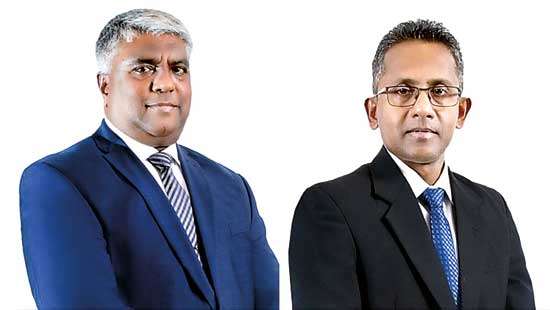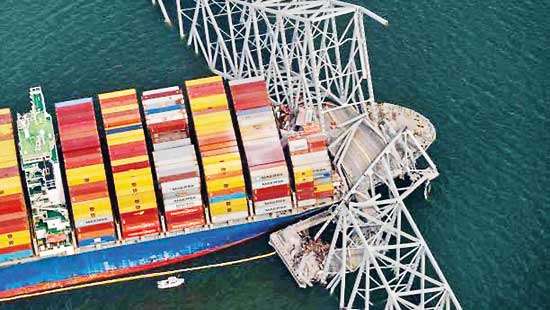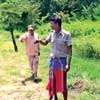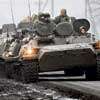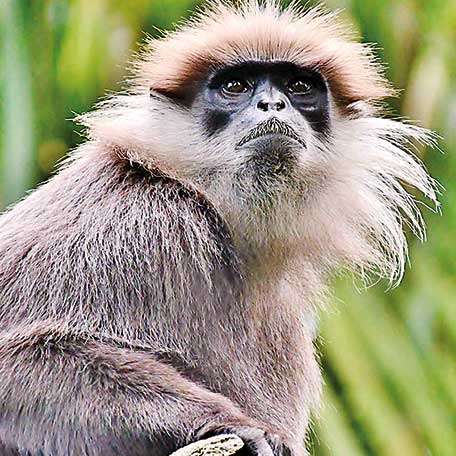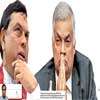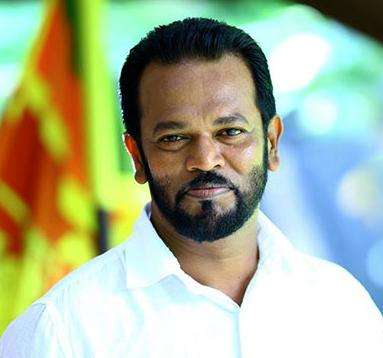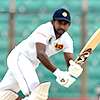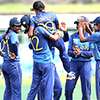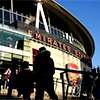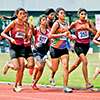It was daily routine for Robert to exercise every morning on the balcony. He was exercising as usual on that fateful day while two of his comrades stood by watching. Suddenly there were three or four “plops” in succession. A bleeding Subathiran was rushed to the Jaffna Teaching Hospital nearby, Robert died before admission
An empty Coke bottle, half empty water bottle, a half empty mixture packet, a nearly empty Lemon Puff biscuit packet and some chocolate labels were left behind. These suggested that the assassins had been hiding in the room from the previous evening or night
Speculation was rife that the officials concerned were Indian espionage agency RAW (Research and Analysis Wing) operatives. The Jaffna grapevine began humming that those officials had had a 45-minute meeting with Subathiran. The Tigers apparently were upset by this and in a pre-emptive bid had killed Subathiran
In spite of the wall of silence that prevailed in the north-east then, the Tamil people were well aware of who was responsible for what. They knew fully well that these types of killings began after Tiger cadres were allowed unfettered entry into government controlled areas to do political work in terms of the ceasefire
By
D. B. S. Jeyaraj
The armed struggle launched by Tamil militant groups to achieve the objective of a separate Tamil state caused massive loss of life and bloodshed. Many of those killed were victims of internecine conflict and fratricidal warfare. Among the many who were killed was Subathiran alias Robert, a charismatic personality with a colourful history. He was killed 19 years ago in June 2003 while a ceasefire was supposedly in progress. This column intends re-visiting the murder this week.
Thambirajah Subathiran alias Robert was shot dead on Saturday, June 14, 2003 at about 6:15 am in Jaffna. Subathiran generally known by his nom de guerre Robert was at the time of his killing, the deputy leader of the Eelam People’s Revolutionary Liberation Front (EPRLF) faction led by Annamalai Varatharajapperumal, former chief minister of the North-Eastern Provincial Council. The other or main EPRLF faction was (and is) led by Kandiah Premachandran alias Suresh.
|
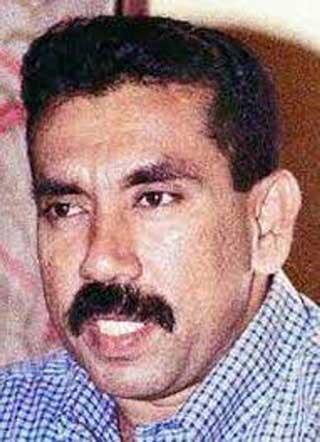
Thambirajah Subathiran alias Robert
Courtesy: The Hindu
|
In those days the two groupings were described in the media as Suresh Faction and Varathan Faction respectively. With Perumal living in India for reasons of security the actual de-facto leaders of the Varathan faction were deputy leader Subathiran and the then General Secretary Thirunaavukkarasu Sritharan alias Sugu. In terms of ground reality, it was Robert who provided day to day leadership in the north-east for the party.
Subsequently the EPRLF Varathan faction became known as the Nabha faction after the main EPRLF’s Co-founder - leader K. Padmanabha. Nabha also called Ranjan was assassinated by the Liberation Tigers of Tamil Eelam (LTTE) in June 1990 at Choolaimedu in Chennai, Tamil Nadu. Later the Nabha faction was registered as a political party with the candle as its symbol. It was named the Padmanabha Eelam Revolutionary Liberation Front. In another change a few years ago the party was re-named Social Democratic Party of Tamils while retaining the candle symbol.
The Norway-brokered Ceasefire had come into effect in February 2002. Despite the ceasefire being in force, the LTTE was indulging in a killing spree, targeting members of the EPRLF Varathan faction and the Eelam People’s Democratic Party (EPDP) led by Douglas Devananda. The EPRLF faction headed by Suresh Premachandran had aligned itself with the LTTE by joining the Tamil National Alliance (TNA) and was not targeted by the tigers.
Prior to Robert’s death, a BBC report had stated that at least 36 persons were believed to have been killed for political reasons in the north-east during 16 months of ceasefire from Feb. 2002 to May 2003. Against this backdrop the killing of Robert – the EPRLF’s north-east commander came as no surprise.
Vembadi Girl’s High School
At the time of his death, Robert was staying in the EPRLF party office premises on Hospital Road in Jaffna. The two storeyed building was in the vicinity of Vembadi Girl’s High School. It was daily routine for Robert to exercise every morning on the balcony. He was exercising as usual on that fateful day while two of his comrades stood by watching. Suddenly there were three or four “plops” in succession. A bleeding Subathiran collapsed. He was rushed to the Jaffna Teaching Hospital nearby. Despite the close proximity, Robert died before admission. A post-mortem revealed later that bullets piercing his shoulder and chest had hit his lungs, arteries and ribs.
The firing had come from a room in a three-storeyed building in the southern area of Vembadi School. A rifle of the ‘sniper’ variety, presumably fixed with a silencer had been used. The assassin or assassins had fired in a south-eastern direction from a distance of approximately 200 metres. The classroom was not in use and was usually kept locked. It was found that a square aperture had been made in the wire mesh covering the window to facilitate ‘sniping.’ A table had been dragged to the window and two small sandbags were mounted on it to perhaps help place the rifle. The colour of the sand indicated that it had come from Vembadi school grounds.
There were tell-tale signs of the assassins keeping vigil overnight to target Robert in the morning. An empty Coke bottle, half empty water bottle, a half empty mixture packet, a nearly empty Lemon Puff biscuit packet and some chocolate labels were left behind. These suggested that the assassins had been hiding in the room from the previous evening or night.
It was patently clear that the assassins were skilled marksmen as it was only Robert whom they had taken out despite two others being on the balcony. The gun was obviously powerful and sophisticated and would have had telescopic sights necessary for sniping. Taking aim and firing precisely from a particular angle at a distance of around 200 metres was certainly not the handiwork of amateurs.
The testimony of the school’s two watchmen was interesting. According to them they had not known anything till two persons came down in the morning and gave them the “key” to the locked room used for the killing. They were carrying a large bag and had no visible firearms on their person. One was a male in trousers and the other a female in school uniform. If these assertions were correct, then the gun must have been dismantled and put in the large bag. But how did they get the key to the locked classroom? Was the question.
Police suspected complicity or at least knowledge of the killing by the watchers. On the previous evening the EPRLF had received a report that the Nallur area Tiger Political Commissar Eswaran was seen at Vembadi School. When the EPRLF men questioned the watchers that evening they had flatly denied it. The watchers Manickam Ilankumaran and Muttukumaru Chandranathan were taken into custody by the Police and remanded until further notice for questioning. Later they were released on bail.
Research and Analysis Wing
Shortly after Subathiran was killed, a rumour began circulating in Jaffna that the EPRLF leader was killed because of an “Indian connection.” It had been reported in the Tamil media that a helicopter carrying some Indian officials had landed at the Jaffna Central College grounds recently. Speculation was rife that the officials concerned were Indian espionage agency RAW (Research and Analysis Wing) operatives. The Jaffna grapevine began humming that those officials had had a 45-minute meeting with Subathiran. The Tigers apparently were upset by this and in a pre-emptive bid had killed Subathiran.
If Indian intelligence personnel had indeed been in touch with Subathiran, it was highly unlikely that they would have done so in such an open and brazen manner. Cloak and dagger activity is not done so visibly. Only morons would have dared to conduct such a meeting in Jaffna with a Tiger omnipresence. Neither RAW nor Subathiran could be called imbeciles. Besides if a face to face meeting was necessary, Robert could have discreetly visited Colombo.
However implausible, this suspicion may very well have been the immediate cause for the LTTE in targeting Robert. With Robert being the mainstay of the EPRLF, the LTTE would have certainly wanted him out of the way. The Tigers knew that the easiest way to wreck an organisation is to eliminate key figures. The mode of assassination however suggested a sense of urgent priority and in that cas e Robert’s murder may have been expedited due to this reason.
LTTE neither denied nor condemned
Though the finger of guilt pointed to the LTTE, the tigers in typical fashion neither denied nor condemned the Robert assassination or the other killings. Given the ongoing pattern of political killings in the Tamil areas during the ceasefire, there were strong grounds to believe that the LTTE was responsible for all the killings including the Robert murder. The LTTE however depicted all the killings as law and order problems for which the police should take responsibility. Since these incidents took place in government controlled areas the onus was on the state, argued the LTTE. The then LTTE Political Wing Chief S. P. Tamilselvan evaded a direct answer when the Norwegian facilitators and monitors broached the subject.
In spite of the wall of silence that prevailed in the north-east then, the Tamil people were well aware of who was responsible for what. They knew fully well that these types of killings began after Tiger cadres were allowed unfettered entry into government controlled areas to do political work in terms of the ceasefire. This was preceded by the handing over of arms in the possession of Tamil militant groups as stipulated by the ceasefire. Given the fact that most of the political activists killed were connected to political organisations opposed to the Tigers and that the LTTE had wanted these Tamil political rivals to leave the Tamil areas, it did not require much intelligence to realise what was happening.
Despite the denials, the Tigers often gave the game away through callous arrogance. The LTTE never issued a statement expressing sympathy or condolences when such persons were killed even as a subterfuge to disclaim responsibility. The deafening silence maintained by the LTTE when such murders took place was an indirect indictment of the Tigers.
Even though the disappearances and killings of Tamil political dissidents in the north-east were going on during the ceasefire, there was very little response to the phenomenon from both official circles as well as the human rights cum peace activist lobby. This was presumably due to a reluctance to ‘upset’ the LTTE in any way. It was felt perhaps that reprimanding the Tigers could lead to a disruption of the so called ‘peace process.’
Subathiran killing shattered complacency
The killing of Subathiran however shattered this complacency. He was the de-jure No. 2 and de-facto No. 1 of the EPRLF (V) organisation when killed. He was a political leader in his own right. Thus, the political establishment and media organs were forced to take notice of the killing.
Large crowds paid their respects as Subathiran’s body was laid in the Jayaratne Funeral Parlour at Borella. Many politicians and journalists were present at the funeral. The then Indian Deputy High Commissioner too was an attendee. Subathiran’s mother and sister flew down to Sri Lanka from Canada for the funeral. The cremation was on Thursday, June 19 at the Hindu section of Borella Kanatte cemetery.
Earlier his body lay in state at the Eelam People’s Revolutionary Liberation Front (EPRLF) office at Hospital Road in Jaffna. The EPRLF office as well as the EPDP office at Stanley Road blared mournful music over loudspeakers. Various statements expressing condolences and condemnation over the killing were issued.
Thambirajah Subathiran alias Robert
Thambirajah Subathiran alias Robert was born on December 24, 1957. He was educated at Jaffna Central and Manipay Hindu Colleges. His father Thambapillai Thambirajah was a retired police sub-inspector hailing from Nunavil East in Chavakachcheri. His mother Ratnamma, born in Udupiddy, was the sister of former ASP Kuttipillai Kumar.
Subathiran’s maternal uncle, ASP Kumar was one of the early victims of Tamil armed militancy. The retired police officer had crossed the path of the Tamil Eelam Liberation Organisation (TELO) led by the legendary Thangathurai alias Thanganna. The TELO was determined to kill Kumar who always carried a gun for his protection. It was known however that Kumar being a devout Hindu did not carry a gun on Fridays. He was buying bananas at the market for his grand daughter on a Friday when Jegan of the TELO closed in on him. Kumar’s hand went instinctively into his pocket reaching for a gun that was not there. Kumar’s hand came out with a handkerchief that fluttered briefly as Jegan gunned him down.
Subathiran’s family was affected in both the 1977 and 1983 anti-Tamil violence. In August 1977, Thambirajah was on duty elsewhere when his house in Kalutara was attacked by mobs. Ratnammah escaped by hiding in a Muslim neighbour’s house. All their belongings were burnt. Ratnamma relocated to Jaffna but Thambirajah continued to serve in the south. In July 1983 he was assaulted by mobs in Kirulapone with some fellow Sinhala policemen collaborating. After discharge from hospital the disgusted policeman retired from the force and went home to Jaffna.
Their troubles did not end. The People’s Liberation Organization of Tamil Eelam (PLOTE) took over their house in Udupiddy given as dowry. So they moved to Thambirajah’s house in Nunavil. The LTTE later took over the Udupiddy house and made it a tiger camp. In 1987 during the Vadamarachchy operation led by Denzil Kobbekaduwa the Udupiddy house – being an LTTE base was destroyed.
General Union of Eelam Students
It was amid these circumstances that Subathiran acquired militant tendencies as a student. He joined the General Union of Eelam Students (GUES) that went on to form the nucleus of the EPRLF. He had a charismatic personality and was able to recruit a large number of youngsters to the movement. Though the EPRLF was conducting a well planned political programme, the 1983 violence and consequent Indian involvement compelled that movement to embark upon a militarisation process.
Subathiran took the nom de guerre Robert and underwent military training at the EPRLF camp in Kumbakonam in Tamil Nadu. He did not receive direct Indian training in Uttar Pradesh. Robert soon became the EPRLF commander for Jaffna while Douglas Devananda was overall chief of the People’s Liberation Army – the military wing of the EPRLF.
Robert and Ramesh were responsible for the EPRLF’s successful heist of the Jaffna post office amounting to around Rs. 11 lakhs. He was also involved in the Chankanai bank robbery. Robert also led the attack on the Kilinochchi police station and participated in the abortive attack on Karainagar naval base led by Sinnavan under the direction of Douglas.
In 1985, Robert was travelling on a motor cycle with another cadre named Kumar, along Beach Road in Gurunagar by the army cantonment, when soldiers recognised Kumar. They fired at them and killed Kumar while Robert was captured. His importance however was not realised and Subathiran spent more than two years in detention at Gurunagar, Palaly, Elephant Pass and Boosa. He, along with his close friend Sritharan alias Sugu were released after the Indo-Lanka Accord.
Nominated as Provincial Councillor
Robert followed the EPRLF line faithfully during the Indian Army (IPKF) period and at one point was nominated as a provincial councillor. His father Thambirajah worked as security supervisor under the provincial council. An LTTE plot to kill some important EPRLF provincial councillors was foiled by Thambirajah. This led to him being marked by the Tigers. Robert’s father Thambirajah was seized by the LTTE on November 11, 1989. Eyewitnesses saw him struggling and kicking his captors and the vehicle.
The LTTE informed Robert’s mother that her husband was being interrogated. In May 1990 Thambirajah’s mother died. His wife entreated the LTTE to release him so that he could perform the last rites according to custom. The Tigers then told her that her husband had tried to escape from custody by wresting a gun from his guards and had been killed in the fracas. He was cremated on November 17, 1989 at Madduvil, the Tigers said.
Robert meanwhile fled Sri Lanka with other EPRLF cadres after the IPKF withdrew. He went to Odisha (then Orissa) and was in charge of a refugee camp there. His mother Ratnammah having lost her husband and being parted from her son became an openly defiant critic of the LTTE. The Tigers in 1992 took her by force on a boat to India and left her there. It was an ‘expulsion’ form of punishment. She was reunited with her son in Madras (now Chennai) and later returned to Colombo from where she went to Canada to join her daughter.
Jaffna Municipal Councillor
Robert returned in the mid ’90s to Sri Lanka. After the armed forces recaptured Jaffna, he returned to Jaffna and commenced political work. The atrocities of certain EPRLF sections like the notorious “Mandaiyan Kuzhu” had alienated the movement from the people. It was due to the untiring efforts of persons like Robert who apologised publicly for past excesses, that the EPRLF was able to re-establish itself in Jaffna again. The 1998 local authority polls saw the party win seats on several councils. It got 15% of the total vote. Robert was elected Jaffna municipal councillor.
The EPRLF split after the return of Varatharaja Perumal to Sri Lanka from India. Robert joined the Varathan faction and became its deputy leader. He was virtually its head as Perumal spent most of his time in India. Robert was also a tower of strength to the Jaffna MC and supported the TULF administration in the face of LTTE threats.
Remained in Jaffna despite danger
Despite danger, he refused to relocate to Colombo and remained in Jaffna, rallying EPRLF cadres. Maintaining cordial relations with moderate politicians of all hues, Robert strove manfully to keep the EPRLF afloat amid turbulent political waters. He never lost sight of the original goal of Tamil emancipation but moderated it now to the vision of regional autonomy along with democracy, pluralism and enforcement of human rights. Though having bade a firm farewell to arms and the Eelam dream, Robert continued to remain what he was essentially – a mighty fighter for the rights of Tamils – until the very end.
(This is a combined version of two earlier articles) D.B.S.Jeyaraj can be reached at
dbsjeyaraj@yahoo.com





